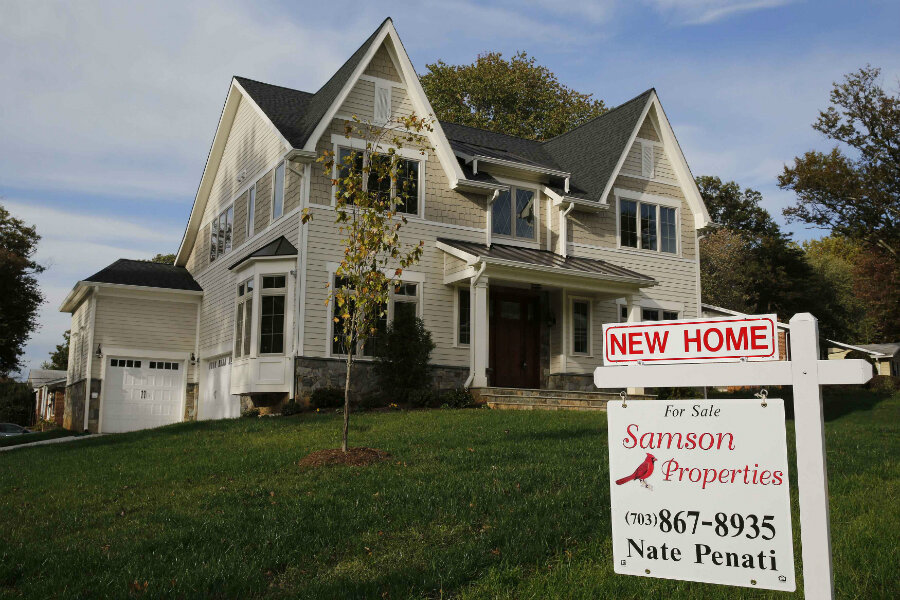Existing home sales fall, while new home sales reach nine-year high
Loading...
Sales of newly built homes grew rapidly in July, surprising economists who had expected a decline and suggesting that growth in the market was sustaining momentum, even as sales of existing homes fell from a nine-year high last month.
The Commerce Department said that new single-family home sales grew in July for the fifth straight month, this time at a annual rate of 12.4 percent, or 654,000 units – the fastest since October 2007. New single-family homes account for just under 10 percent of overall home sales.
Millan Mulraine, deputy chief economist at TD Securities in New York, says the numbers pointed to "sustained buoyancy in the sector's recovery, which remains one of the few bright spots for the US economy," according to Reuters.
"A very rosy picture is beginning to emerge on the housing market," he said.
But the numbers also suggest an uneven distribution of growth. Gains in new single-family home sales were concentrated in the Northeast (increasing 40 percent) and in the South (18 percent), where more than half of new home sales in the US are made. Sales were flat in the West, where home prices are spiking, while the Midwest saw 1.2 percent growth.
"Momentum is finally shifting back toward the new home market, particularly in the South, which has seen sales and new construction take off this year as job growth and in-migration have strengthened," said Mark Vitner, a senior economist at Wells Fargo Securities in Charlotte, in an interview with Reuters.
The market for existing homes, meanwhile, hit a rough patch. Sales fell 3.2 percent in July amid a shortage of affordable units after reaching a decade-long peak in June, according to a report from the National Association of Realtors (NAR).
"Realtors are reporting diminished buyer traffic because of the scarce number of affordable homes on the market, and the lack of supply is stifling the efforts of many prospective buyers attempting to purchase while mortgage rates hover at historical lows," said NAR chief economist Lawrence Yun in a statement.
That may be, in part, because first-time home buyers are more straddled with debt than they have been in the past, as The Christian Science Monitor reported:
The decrease [in homeownership] is attributed to more expensive property prices, high rents, and stagnant pay. Millennials, the generation now roughly between ages 18 and 34, are particularly less likely to be owning homes: In the past year, their home ownership rate fell by 0.7 percentage points. Experts believe high apartment rents and intense student debt are making it more difficult for Millennials to purchase homes.
New home sales in the West are also facing constraints, including a low inventory of homes on the market that limits buyer choices, said IHS Global Insight economist Kristin Reynolds in an emailed analysis.
"The number of homes for sale in July has not been this depressed since the economy exited the 2001 recession.... Homes that do sell are selling faster, suggesting that buyers are on the sidelines waiting for suitable homes to become available," she wrote.
Still, optimism remains the key theme of analysts' projections.
"We do not take a negative signal from the larger-than-expected decline in existing home sales in July," writes Barclays analyst Michael Gapen in an emailed report. "We felt the rise in Q2 sales would be reversed in the coming months and we view the July data as retracing some recent strength.... Ongoing gains in employment and low interest rates should continue to underpin housing demand in the coming quarters."
This report contains material from the Associated Press and Reuters.






